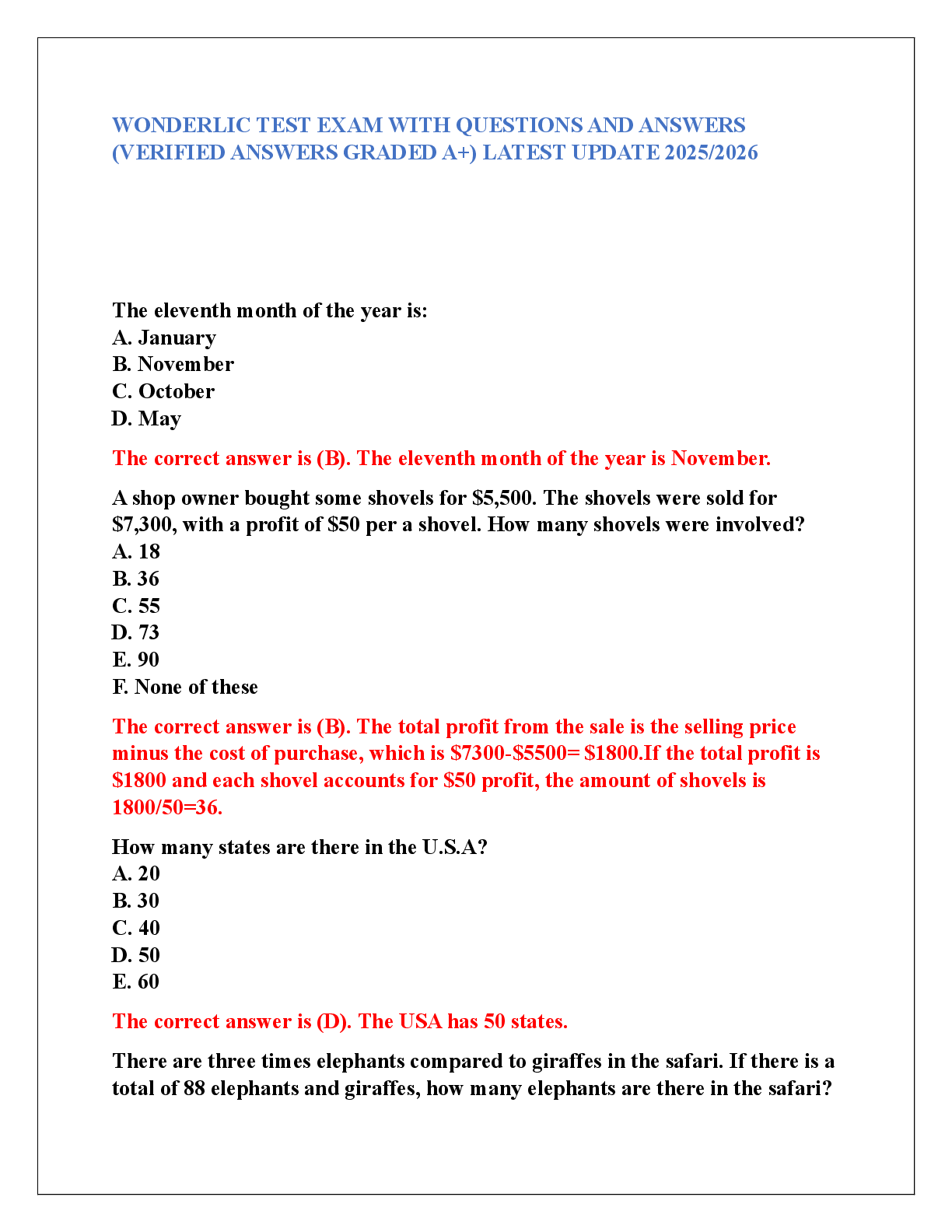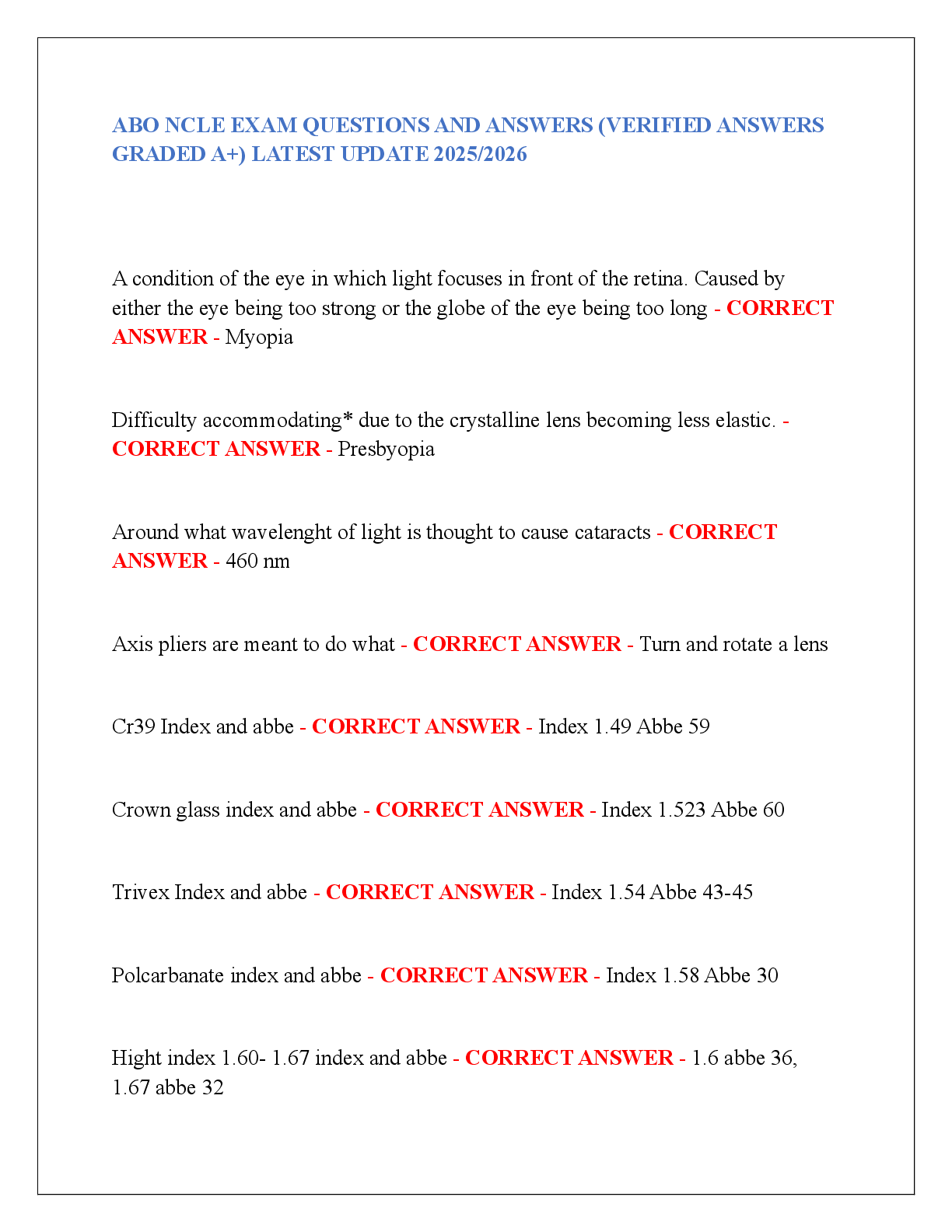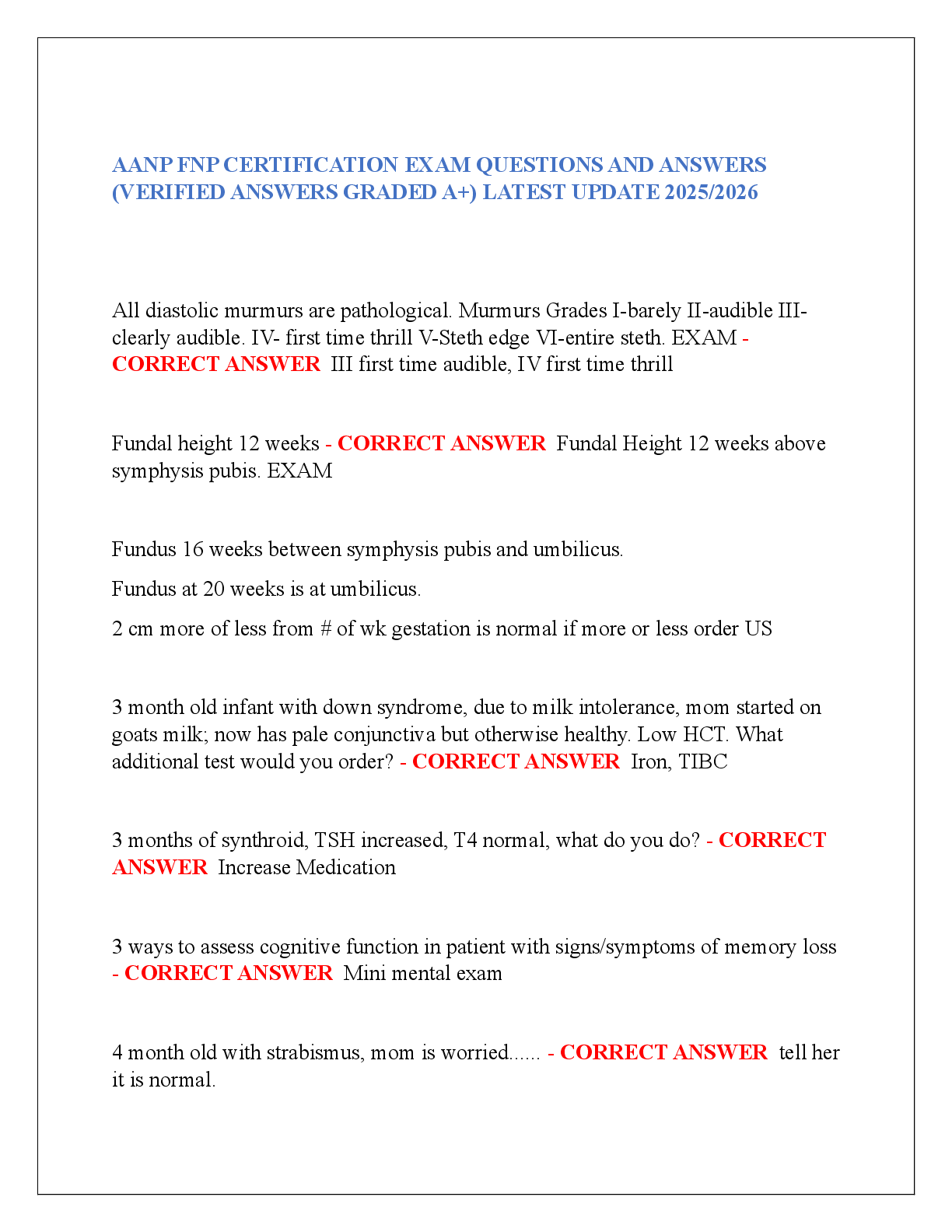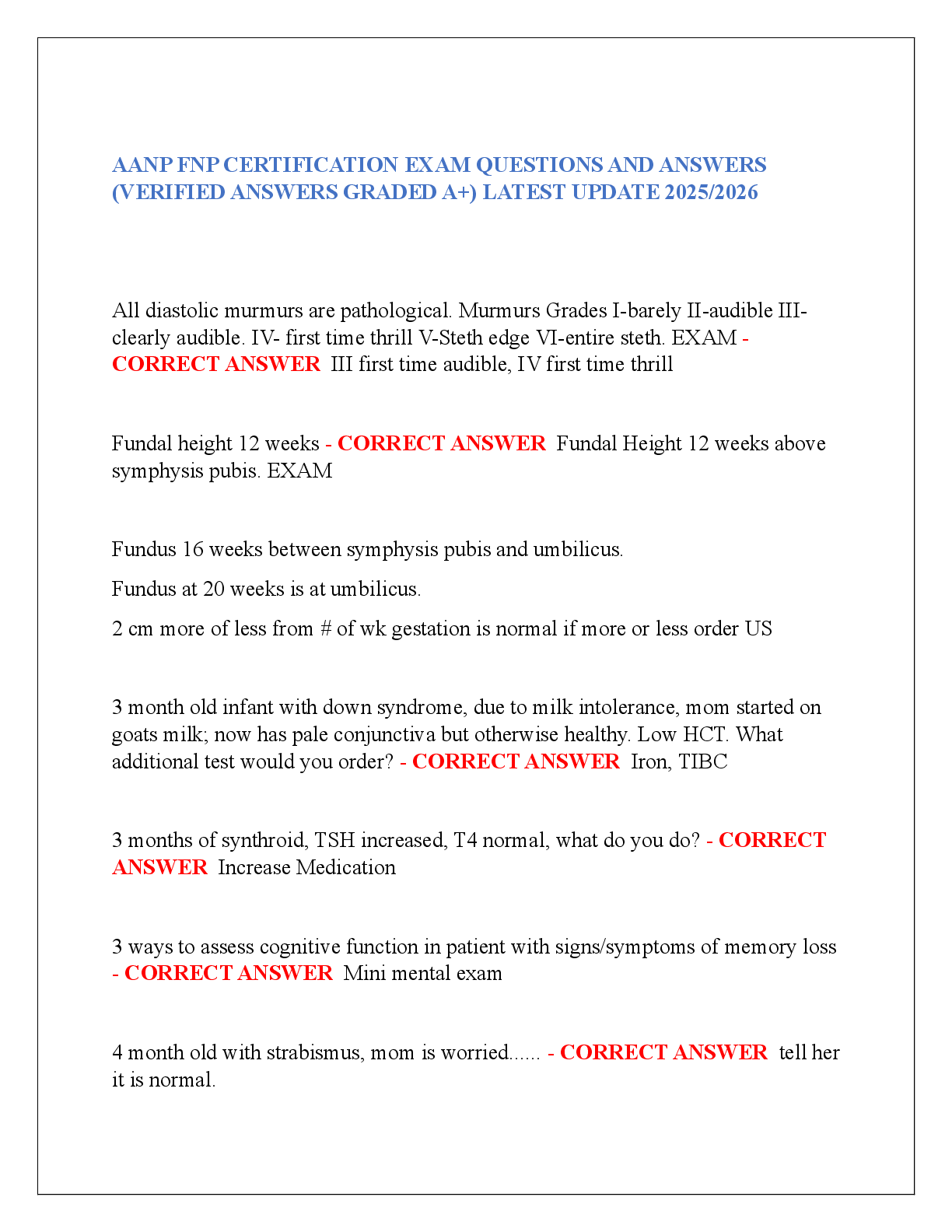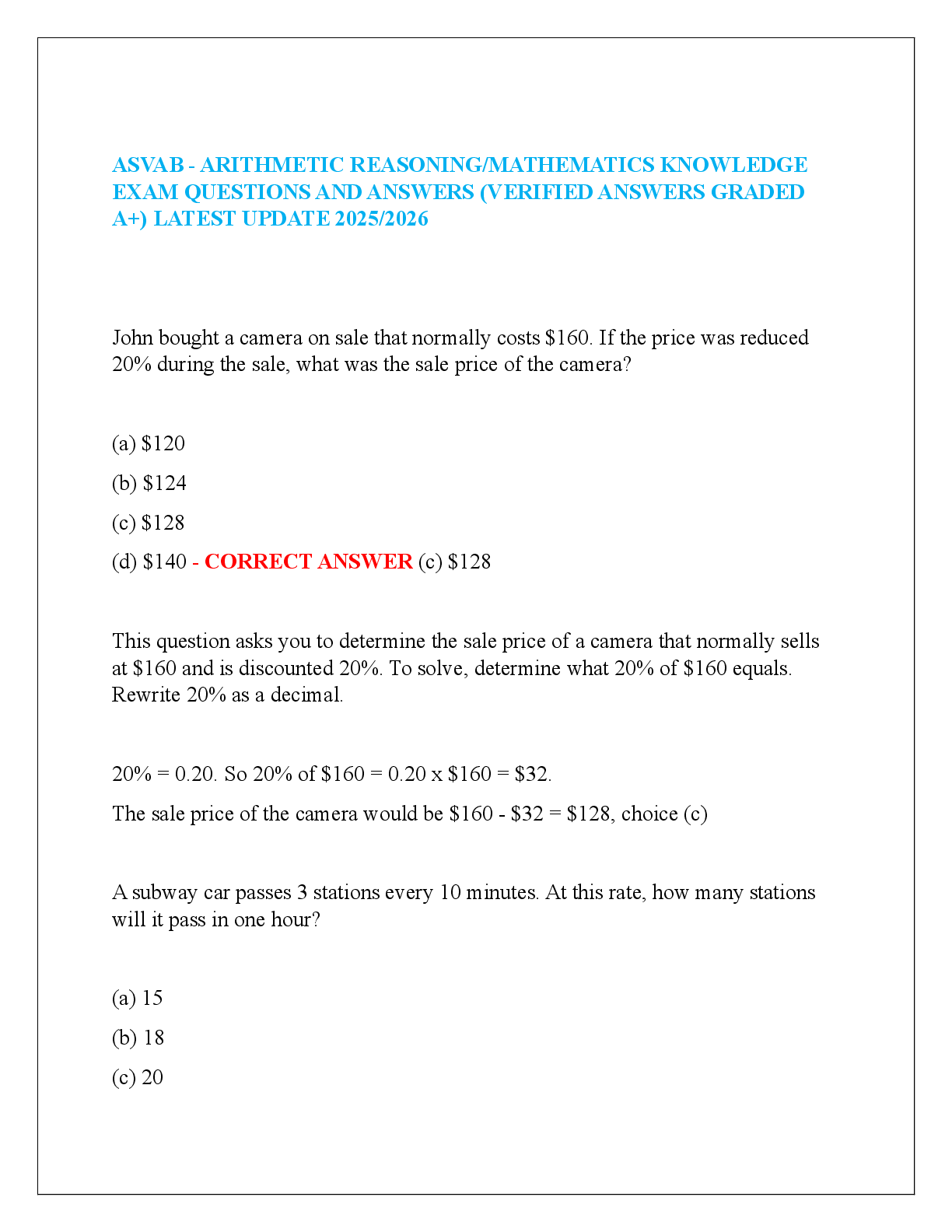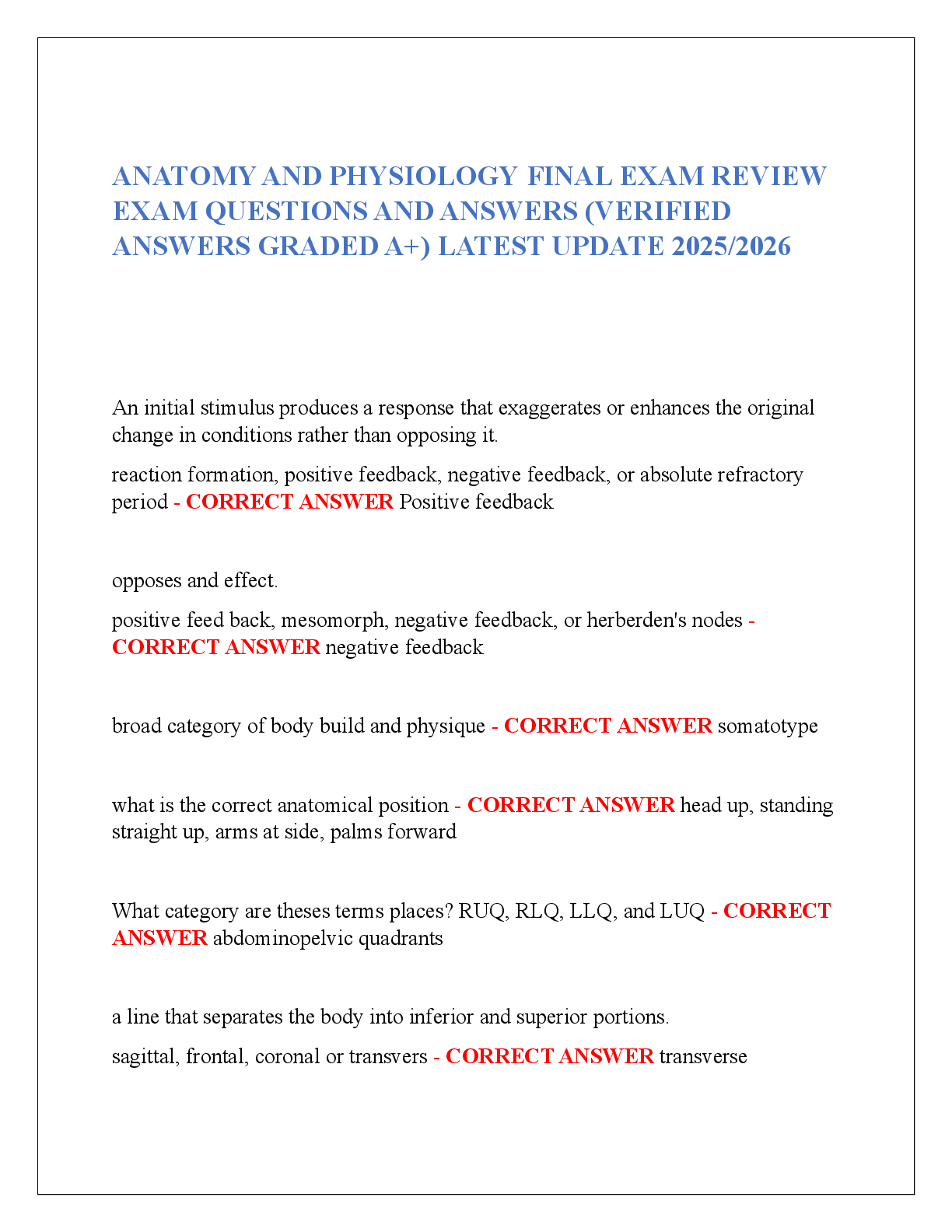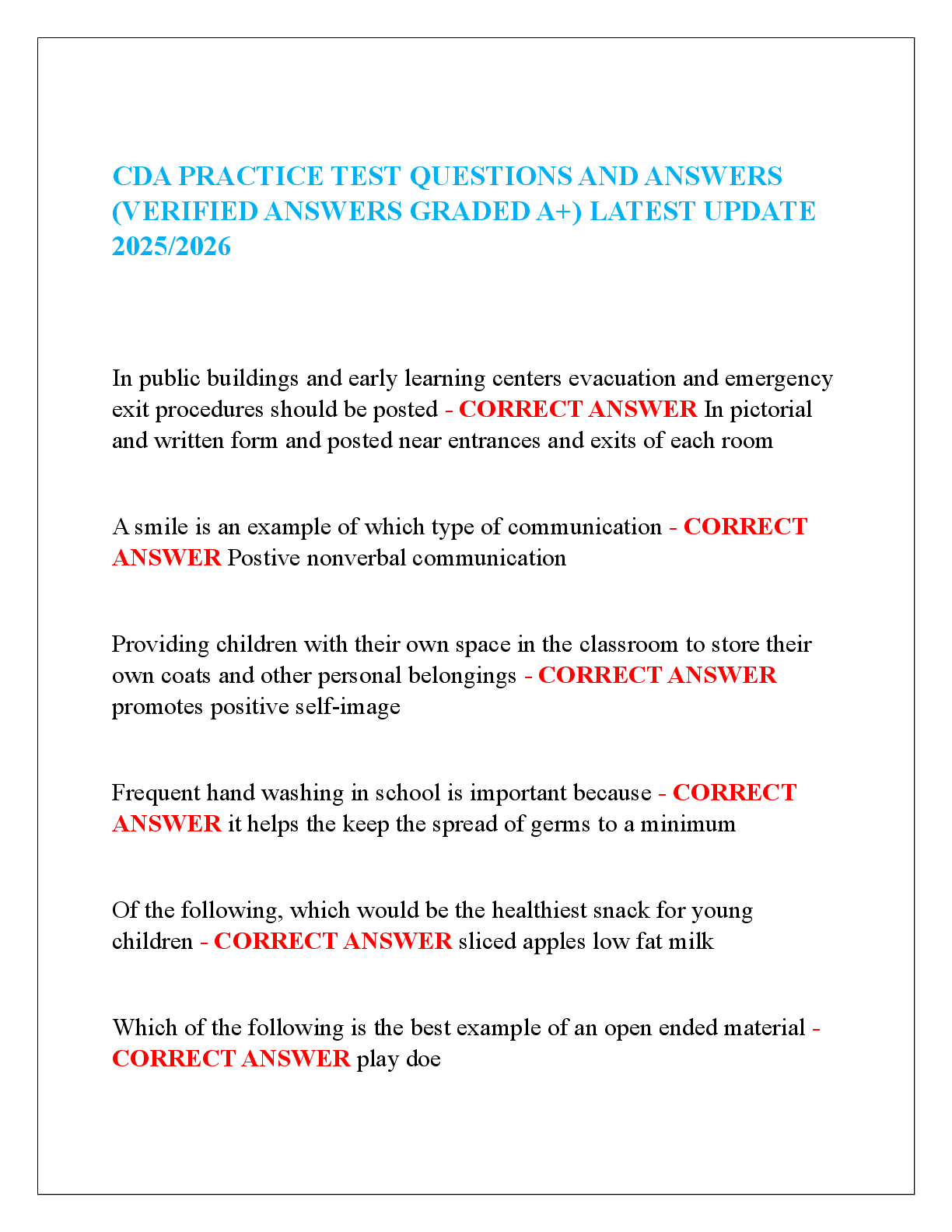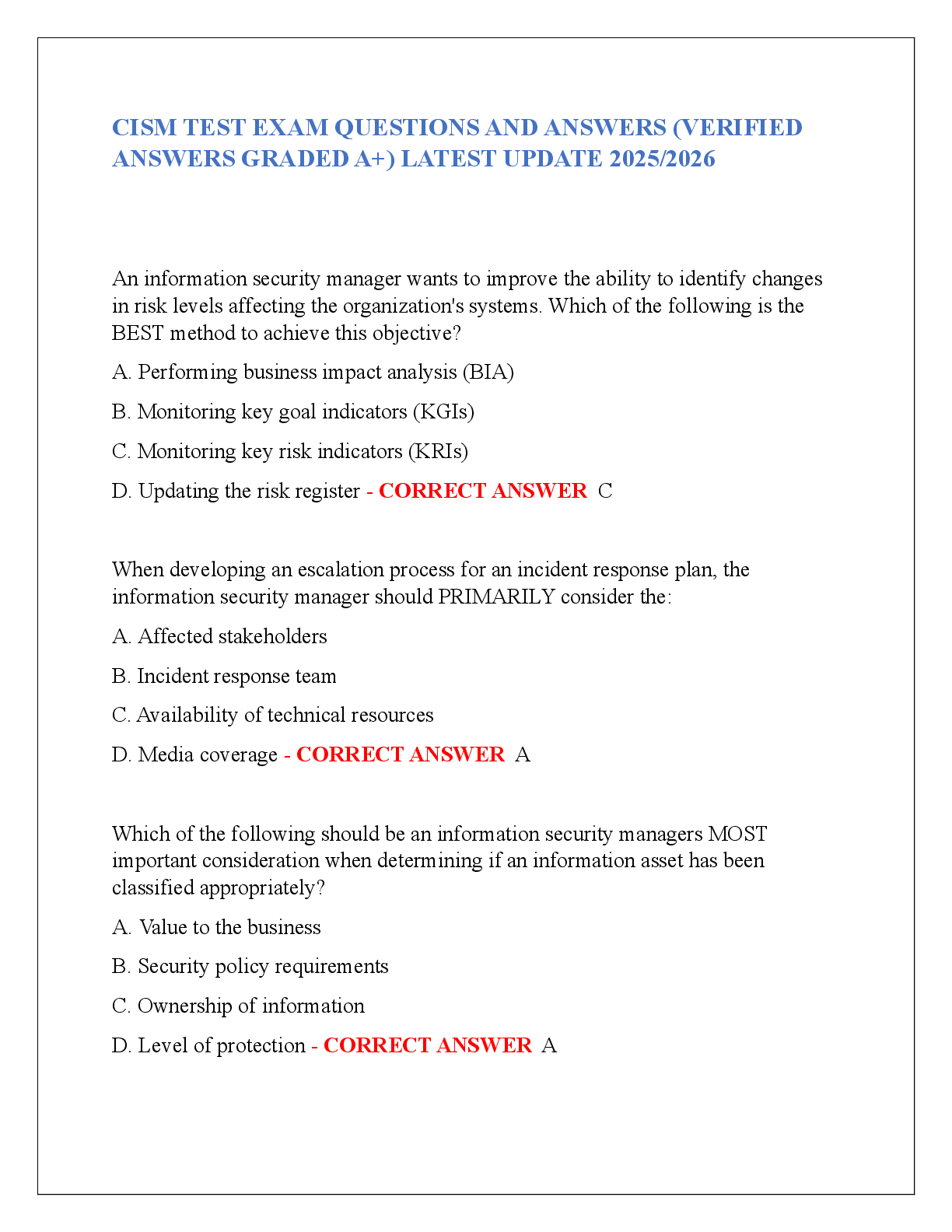NURS 6645 Midterm 3 (Graded A+) LATEST UPDATE 2022
Document Content and Description Below
1. Which of the following is inconsistent with Socratic Dialogue basic rules for the therapist? Which of the following is inconsistent with Socratic Dialogue basic rules for the therapist? A. The co... llaborative dialogue is goal-directed and specific. B. The therapist may use everyday experiences as therapeutic metaphors. C. Self-disclosure is frequently used to motivate the patient in problem solving. D. Socratic Dialogue questions should be framed in a way to elicit an affirmative response. 2. A patient involved in expressive psychotherapy is having intense emotional reactions to painful experiences that have been expressed. This is known as which of the following? Catharsis 3. Th e change agent in relational psychodynamic therapy is which of the following - Mindfulness 4. schizoid personality is a pathological outcome associated with which of Erikson’s psychosocial stages? Intimacy vs isolation (20-30yrs) 5. patients who would not be considered ideal candidates for psychoanalytic psychotherapy are which of the following? - Pts who do not know who they are - Those who are not in touch with reality - Those who cannot perfectly describe others. - Those that are confused 6. The therapist using a CBT approach says to the patient: “You say you become depressed. Explain to me what depressed feels like to you.” This is an example of what question type in Socratic Dialogue? Translational Questions 7. Which of the following is true regarding the difference between brief and long-term psychodynamic psychotherapy? Brief psychodynamic Psychotherapy takes place in fewer days per week and lasts for a shorter duration. - Although psychodynamic psychotherapy is frequently thought of as long- term therapy, brief psychodynamic psychotherapy is probably most often practiced given the current climate of managed care. - Long term goes for more than 1yr-2yrs and over 40 sessions. - Brief will be goal-oriented with about 25 sessions. Psychodynamic therapy focuses on unconscious processes manifested in a person’s behavior. 8. Which of the following is true about Automatic Thought Records? ATS (page 368) - key component in CBT - first introduced in 1979 by Beck to capture and analyze automatic thoughts both during and between sessions.- Used as homework after introducing the process within the therapy session [Show More]
Last updated: 2 years ago
Preview 1 out of 12 pages
 LATEST UPDATE 2022.png)
Buy this document to get the full access instantly
Instant Download Access after purchase
Buy NowInstant download
We Accept:

Reviews( 0 )
$9.00
Can't find what you want? Try our AI powered Search
Document information
Connected school, study & course
About the document
Uploaded On
Jul 11, 2022
Number of pages
12
Written in
Additional information
This document has been written for:
Uploaded
Jul 11, 2022
Downloads
0
Views
79



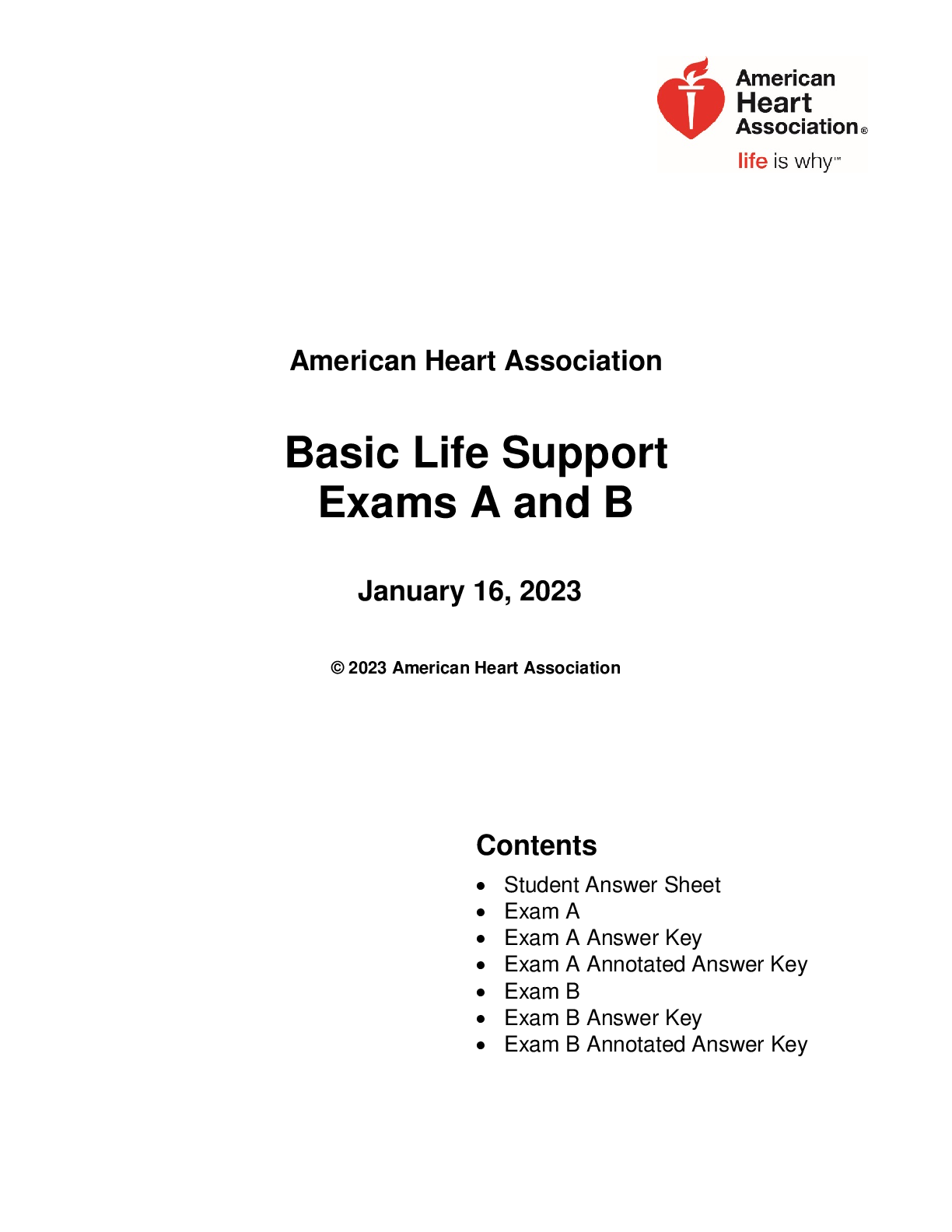










 LATEST UPDATE 2022.png)
